
Swimming involves the combination ofdifferent body movements and strokes that people commonly use inorder to move on the surface of water. These strokes and actions areusually performed in a rhythmic manner, involving many muscles ofone's body.
Therefore, swimming is considered to bea great exercise for losing weight and toning your body. However,swimming can have many therapeutic purposes too, combining specialstrokes which can prove to be very beneficial for people who sufferfrom some health problems or different forms of paralysis ordisabilities.
Benefits of Swimming
There are many benefits related toswimming. Therefore, all people should get involved in it as often aspossible, reaping these benefits.
First of all, swimming is considered tobe a low-impact form of exercising, due to the fact that there is noground beneath your feet as you move through the water. Thus, yourjoints and muscles are completely safe during swimming, incapable ofgetting strained or stressed. Hence, swimming is a highly recommendedrehabilitation tool for all those who suffer from arthritis.
In fact, there is a special type ofaerobics called water aerobics, designed for being practiced by thosewho cannot afford to pose excessive stress on their sensitive joints.While spending time in the swimming pool, even when you touch thebottom you will not be injured or exposed to the force of impact.Moreover, most rehabilitation activities involve the participantsusing special, buoyant props, making the chances of losing yourbalance almost non-existent.
Secondly, swimming does not have an ageor a time limit. Rather, you can practice it for a lifetime.Interestingly, the United States Masters Swimming organization has acategory for swimmers between 100 and 104 years of age. Also, themaster of fitness, Jack la Lanne, swims every day, even though he is93 years old.
The key to the health behind swimminglies in the cardiorespiratory fitness you develop once youparticipate in this physical activity regularly. You boost theseskills of your over time. Therefore, on average, after a 12-weekswimming course, the maximal oxygen consumption of a person increasesby 10%, along with his/her stroke volume, which undergoes an evengreater improvement, being 18% stronger.
Furthermore, swimming builds up musclemass. A study carried out, encompassing an eight week swimmingprogram discovered that the participants experienced amazing 23.8%increase in this size of their triceps muscles. Thus, even thoughmany people consider swimming a sport which cannot result inincreased levels of muscle mass, it increases your strength levelssignificantly and this has a great positive impact on your health.
Swimming Stroke Techniques
Swimming is a sport or a skill whichhas evolved much since the people first learned how to move on thesurface of water by using nothing but their bodies. Subsequently, wehave an abundance of different stroke techniques that variousswimmers use for countless different purposes.
In order to swim in the fastestpossible manner, you are advised to use the front crawl. Next,trudgen is a type of swimming using a mixture of the front crawl andthe scissor kicks, while the trudgen crawl involves mixing flutterkicks and scissor kicks. Now, depending on the movements incorporatedin the trudgen, there are variants of this stroke technique calleddouble trudgen and double trudgen crawl.
Then, swimmers may use a dolphin crawl,with two kicks per arm or two kicks per cycle, using a special,dolphin kick. Another variation of the front crawl is the catch upstroke with a single arm resting in front of the body while the otherone performs all the movements which result in swimming.
Butterfly stroke is performed whilekeeping your face in the water, combining a dolphin kick and movingboth of your arms forward together, resembling the movements thatbutterflies make. Another face-down stroke technique is calledbreaststroke, done through a mixture of dolphin kicks and circularhand movements. When the butterfly incorporates a longer glidebetween the strokes, it is called the slow butterfly technique.
Some people imitate dogs whileswimming, assuming a position which involves their face being overwater, peddling with their hands, performing the same,interchangeable strokes with their feet. If the arms reach out moreand perform a greater pull while doing the dog paddle, the stroketechnique is called human stroke.
Other popular swimming stroketechniques are backstroke, elementary backstroke, inverted butterfly,feet first swimming, flutter back finning, corkscrew swimming andunderwater swimming.
Of course, while swimming, as long asyou keep your safety in mind, you can combine many possibletechniques, getting the most out of your swimming sessions andengaging as many muscle groups as you can. This is yet anotherreasons why swimming is considered to be one of the best forms ofphysical exercising in the world, low-impact, available to all andincredibly healthy.


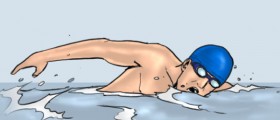
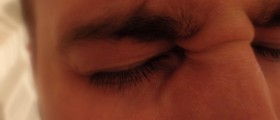

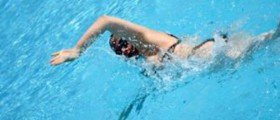



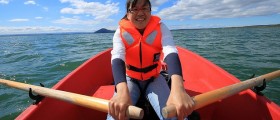


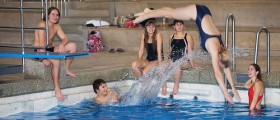




Your thoughts on this
Loading...